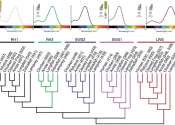Many old books contain toxic chemicals—here's how to spot them
In our modern society, we rarely consider books to be dangerous items. However, certain books contain elements so hazardous that they require scrutiny before being placed on the shelves of public libraries, bookstores or ...






